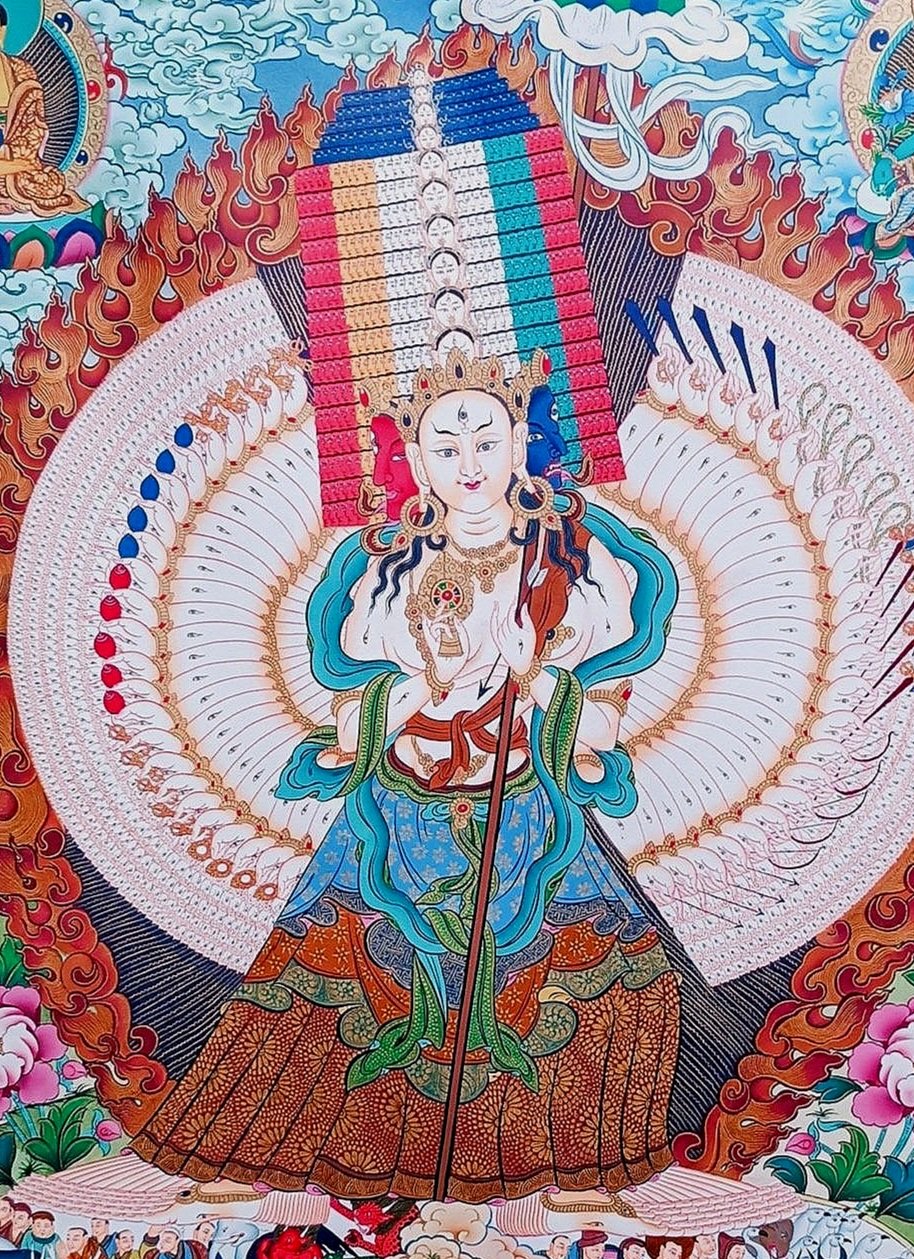 Image 1 of 3
Image 1 of 3

 Image 2 of 3
Image 2 of 3

 Image 3 of 3
Image 3 of 3




Dukkar; Sitatapatra; གདུགས་དཀར། ནང་ལྷ།; 大白伞盖佛母
Dukkara, commonly known as Sitapatra or "white parasol," is a prominent deity within Tibetan Buddhism. She is typically represented with a thousand heads, a thousand arms, and a thousand legs, which symbolise her omniscience, omnipresence, and omnipotence. Dukkara is regarded as an embodiment of the bodhisattva Avalokiteshvara, who represents compassion. Consequently, she is held in high esteem for her ability to alleviate suffering and offer support to those in need.
Hand-painted in Nepal.
The Natural Pigment Painting measures 27 inches X 19 inches with an additional silk Thangka bordering it.
Dukkara, commonly known as Sitapatra or "white parasol," is a prominent deity within Tibetan Buddhism. She is typically represented with a thousand heads, a thousand arms, and a thousand legs, which symbolise her omniscience, omnipresence, and omnipotence. Dukkara is regarded as an embodiment of the bodhisattva Avalokiteshvara, who represents compassion. Consequently, she is held in high esteem for her ability to alleviate suffering and offer support to those in need.
Hand-painted in Nepal.
The Natural Pigment Painting measures 27 inches X 19 inches with an additional silk Thangka bordering it.
Dukkara, commonly known as Sitapatra or "white parasol," is a prominent deity within Tibetan Buddhism. She is typically represented with a thousand heads, a thousand arms, and a thousand legs, which symbolise her omniscience, omnipresence, and omnipotence. Dukkara is regarded as an embodiment of the bodhisattva Avalokiteshvara, who represents compassion. Consequently, she is held in high esteem for her ability to alleviate suffering and offer support to those in need.
Hand-painted in Nepal.
The Natural Pigment Painting measures 27 inches X 19 inches with an additional silk Thangka bordering it.